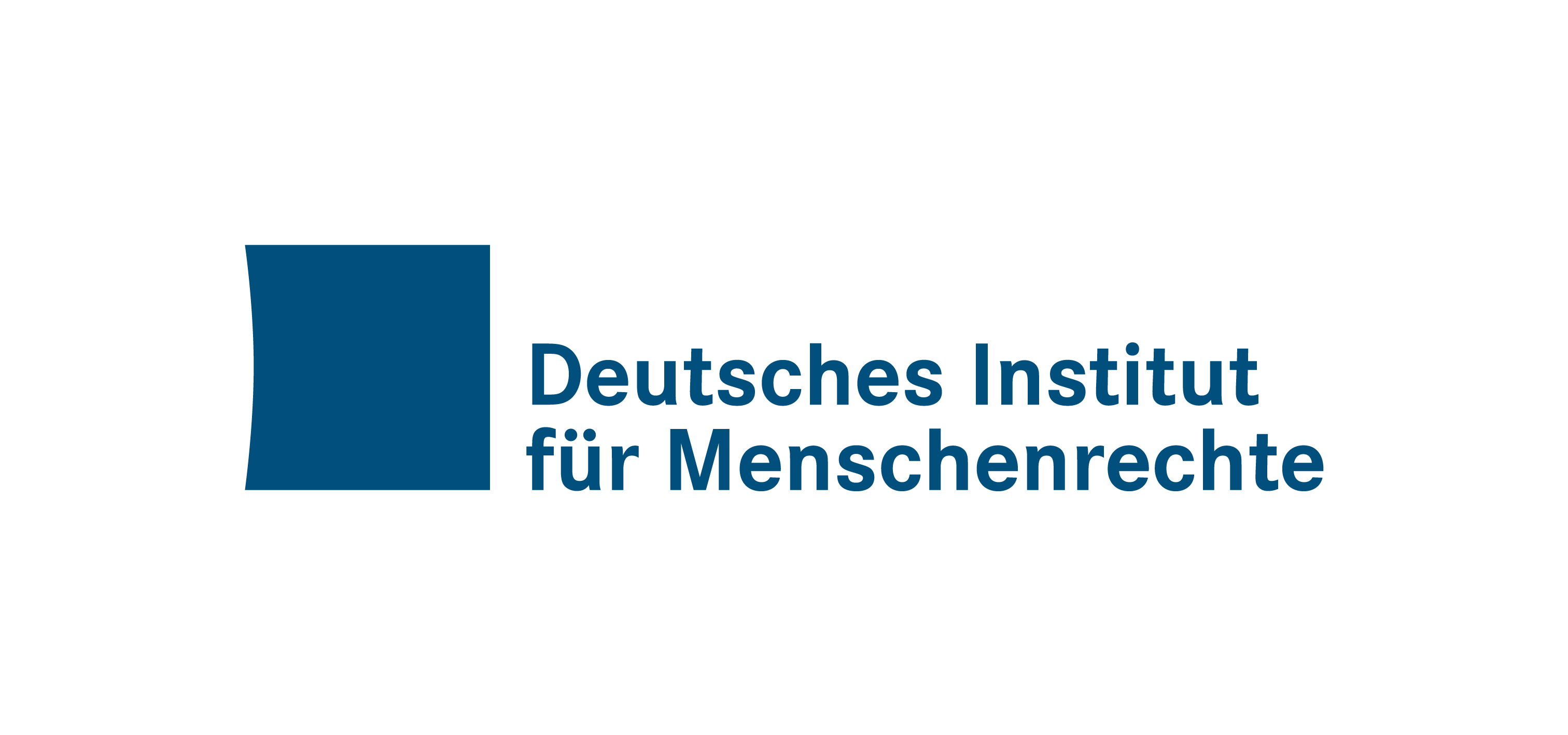Federal Court of Justice (BGH), Judgment as of 11/19/2009
File number 3 StR 87/09
Key issues
Extensive criminal proceedings and adhesion procedure regarding human trafficking for the purposes of sexual exploitation, hostage taking, rape, and sexual coercion; award of damages for pain and suffering in the amount of EUR 150,000 to two female co-prosecutors; very extensive comments on reviewing the plausibility of a recorded statement to the police when the main witness for the prosecution is unfit to testify; comments on victim behaviour and the perpetrator-victim relationship in cases of violent acts that endure for a longer period of time; detailed presentation of the after effects of the crime and the criteria for assessing the amount of damages for pain and suffering; comments on the decision on costs in an adhesion procedure when the court awards less than the amount claimed.
Summary
On the appeal brought by the accused Kl. and K. against their convictions by the court of first instance, the BGH made only a minimal modification to the guilty verdict of Kl. The court of first instance had sentenced the two accused to imprisonment for 14 years followed by preventive incarceration respectively for 12 years and six months for, among other things, hostage taking, serious human trafficking, serious rape, and sexual coercion. In an adhesion procedure, Kl. was ordered to pay damages for pain and suffering to the female co-prosecutor T. in the amount of EUR 150,000. Both accused were ordered to pay, as joint and several debtors, EUR 150,000 to the female co-prosecutor E. and EUR 5,000 to the female co-prosecutor Eg. The court also imposed on the two accused an obligation to pay damages for future loss ensuing from the crimes.
Factual events
According to the findings of the court of first instance, the two accused parties had decided at the beginning of 2006 to operate a brothel in Kl.’s house. Because no prostitutes answered their advertisements, they developed a plan to lure women into the house under the pretext of a job offer, and then to overpower them, to imprison them, and to force them to work as prostitutes.
In this way, the co-prosecutor T. was lured into the house in August 2006 and was detained there for a period of three months. She was raped and tortured by the accused Kl. on a regular basis. Because he wanted her as a girlfriend, she was not put to work as a prostitute as originally planned, but was coerced into naming other women who were supposed to be lured into the house and forced to work as prostitutes.
In September 2006, the men contacted the co-prosecutor E. She was lured into the house under the pretext of a job interview, where she was overpowered and tied up. In some instances T. also had to tie up E. and carry out degrading acts on her. She was filmed by Kl. while doing this. T. had to train E. as a prostitute. E. was raped numerous times by K. and had to work as a prostitute for approximately two weeks. In this time she serviced around 24 clients. In each case she had to give the money to the accused.
The accused led the co-prosecutors into thinking that they belonged to a large criminal organization. To make them compliant and to keep them from running away, they threatened to harm them or their relatives, among other things. Both T. and E. had the opportunity to escape on several occasions. But because they thought that the accused had extensive knowledge about their lives and because they took their threats very seriously, they did not run away.
The accused also intimidated the co-prosecutors by inflicting cruel and degrading practices on them, which they called “punishments”. T. for example was wrapped up completely in a plastic sheet and threatened with being left to die. E. was forced, among other things, to spend ten nights in a cage and to spend hours tied to a table.
E. too was forced to name other potential victims. In October 2006 she contacted Eg., with whom she was casually acquainted, and arranged a meeting with her. Eg. was brought into the house, overpowered, undressed, and tied to a chair in a degrading position. However, during an unguarded moment, she was able to free herself, escape from the house over the roof, and inform the police.
The two accused fled with the women before the police arrived. While the accused K. surrendered himself with E. to the police a few days later, the accused Kl. continued his flight with T. During this time, the woman was forced to suffer further acts of rape. Although opportunities to escape presented themselves, she still did not take advantage of them because she still believed in the threats and because she was afraid of being criminally prosecuted herself for her treatment of E. It was not until the 23rd of November 2006 that Kl. and T. were arrested, whereby T. was also initially detained as she was thought to have been a co-perpetrator. She was not released until the 14th of December 2006.
Testimonies of the witnesses and the review of plausibility
The court of first instance arrived at these findings of the factual events on the basis of the testimonies of the witnesses, especially the co-prosecutors, all of which the court held to be credible. The court relied predominantly on the statements made by T., a co-prosecutor and the main witness for the prosecution, which it held to be plausible to the full extent. The court had been unable to gain its own personal impression of T. due to the fact that she was unfit to testify; a questioning of her as a witness could have, in the opinion of the expert, caused a dangerous destabilization of her health. For this reason, the written records of the police interrogation were introduced into the proceedings. These statements were subjected to a particularly scrupulous review of plausibility. In doing so, the court applied the so-called “null hypothesis”. First it was presumed, in favour of the two accused K. and Kl., that T.’s statements were false and these were then tested against certain circumstantial evidence. In the court’s analysis of the contents of the statements, extensive submissions were made as to why the woman was to be considered credible and why it should not be presumed that she was just imagining that she had been a victim. In support of the plausibility of her statements were, in the opinion of the court, such things as the detailed nature of the descriptions, the strong emotions accompanying the statements, messages conveyed through body language, and for example the springing from one thing to another in the factual events without getting caught up in inconsistencies.
The court also discussed the critical issues, such as the special trust relationship between the interrogating policewoman G. and the co-prosecutor. It did not find that the statements had been manipulated but believed instead the explanation given by the policewoman, namely that only in this way had it been possible to slowly dissolve T.’s general distrust of the police that had been instilled in her by the accused.
Even the fact that T. had been detained for two and a half weeks before she made her statements, which then led to her release, was not something that the court thought spoke against her credibility, since she had been threatened by the accused Kl. if she made any statements to the police. Furthermore, in the opinion of the expert, the woman simply wanted to be left in peace after having been imprisoned for such a long time.
The comparisons made with the testimonies of the other male and female witnesses, with the accused parties’ pleadings to the charges, and with the other evidence all supported T.’s credibility.
The court also saw nothing inconsistent in holding that the statements made by the woman in the police investigations were plausible while at the same time acknowledging that she was unfit to testify, because the latter had nothing to do with her general ability to talk about her experiences but rather with the danger it posed to her health if she had to repeat them in court.
The opinions given by several experts confirmed T.’s credibility and discussed, among other things, the special behaviour of victims and the perpetrator-victim relationship in the case of violent acts that endure for a longer period of time.
The court also found E.’s testimony to be plausible, emphasizing in particular her strong emotional and her authentic reactions during her testimony.
After effects of the crime and assessing the amount of damages for pain and suffering
The court made detailed findings on the after effects of the events on the co-prosecutors.
T. first had to suffer a 3-week detainment because she was initially presumed to be a co-perpetrator. She also suffers, since the crime, from chronic posttraumatic stress disorder, which manifests itself primarily in the form of so-called “flashbacks”. This means that the traumatic situations are experienced again as if they are actually happening. She therefore tries to avoid anything that "triggers" these. Added to this are nightmares, sleeping disorders, irritability, and difficulties in concentrating. A confrontation with the events of the crime could trigger a nervous breakdown or possibly suicide among other things. She also suffers feelings of guilt towards E.
E. suffers increasingly from psychological problems such as severe anxiety when she is alone or a fear of strangers. She has moved with her family to a different dwelling, has given up her job, and has ended the relationship with her partner. She has begun psychotherapy and is being treated with medication.
Eg. suffered from a fear of being pursued, especially as long as Kl. had not been arrested. She had nightmares but was able to overcome her problems without therapeutic help.
In conjunction with the application for an adhesion procedure, the court commented on the criteria to be used to assess the amount of damages for pain and suffering.
In assessing the amount that T. was able to demand from Kl., the court identified the following criteria:
- the severe after effects of the crimes,
- the duration of the criminal acts,
- the large number of sexual crimes actually committed,
- the gravity of the degrading acts,
- the forced collaboration in the acts done to E., which led to T.’s detainment, and
- the intentional harm of an especially inhumane nature.
On the other hand, the court saw - in favour of Kl. - the heavy sentence with preventive incarceration as some kind of atonement for T., but held at the same time that the criminal proceedings could not really help to overcome what had happened. Kl.’s poor financial situation was also a factor that the court thought would cause the large amount of compensation to affect him particularly hard.
Other judicial decisions dealing with compensation could not be referred to due to the uniqueness of the case. A simple adding up of the crimes was also not considered by the court to be a suitable solution.
In the end, the court held that the payment of damages for pain and suffering by Kl. to T. in the amount of EUR 150,000 was appropriate.
In assessing the amount of damages for pain and suffering owed to E. by both accused as joint and several debtors, the court identified the following criteria:
- the duration of the events,
- the large number of sexual crimes with a large number of persons,
- the degrading treatment of having to sleep in a cage and the other "punishments",
- the forced collaboration in the acts injurious to Eg., and
- the nine acts of rape by K.
While with T. the court gave a great deal of weight to the gravity of the after effects of the crime, with E. it focused more on the fact that she had been forced to work as a prostitute.
The court awarded E. damages for pain and suffering in the amount of EUR 150,000 against Kl. and K. as joint and several debtors.
For Eg., the court held that EUR 5,000 was appropriate because of the particularly degrading treatment at the hands of the perpetrators and for the fears she suffered. The court also stressed that the degree of fault/guilt (manifested here in the accused parties’ plan to do the same things to Eg. that they had done to E.) was a separate factor to be given its own weight in assessing the amount of damages for pain and suffering. Although in this case the perpetrator K. participated to a lesser degree in the events of the crime, he was, on account of the common plan to commit the crime, considered to be equally answerable as a co-perpetrator for the entire pecuniary and non-pecuniary loss.
Decision on costs
In the decision regarding the costs of the proceedings, the court held that the accused parties bore the full costs of the proceedings, including those incurred by the co-prosecutors asserting their claims to damages even though the court did not award them as much they had claimed (EUR 500,000 respectively EUR 450,000). The court pointed out that, due to the uniqueness of the case, the co-prosecutors had been unable to use other compensation awards as guidelines and that it was also imaginable that they might have been awarded other forms of compensation under civil law. Kl.’s appeal was largely against the decision on costs, but was unsuccessful in this.
The BGH upheld the judgment of the court of first instance almost entirely. The only point that it modified was the guilty verdict of one of the crimes that Kl. had been charged with. The court of first instance had classified as sexual coercion one of the acts pursuant to which T. was supposed to simulate masturbation. But because sexual coercion requires body contact with the perpetrator or with a third party, the BGH regarded this as a particularly serious form of coercion only. This modification had, however, no impact on the sentence.
Decisions in full text or in abstract (Judgment of the Regional Court (LG) - Verden, 268 pages in total):
BGH_19_11_2009 (PDF, 107 KB, not barrier-free, in German)
LG_Verden_87_88_Tatfolgen (PDF, 1,02 MB, not barrier-free, in German)
LG_Verden_124_140_Aussage_Nebenklaegerin (PDF, 9,59 MB, not barrier-free, in German)
LG_Verden_147_149_Auswertung_SV_Gutachten (PDF, 1.650 KB, not barrier-free, in German)
LG_Verden_264_268_Adhaesionsantraege (PDF, 2.278 KB, not barrier-free, in German)










